
Aitken is a large lunar impact crater that lies on the far side of the Moon, named for Robert Grant Aitken, an American astronomer specializing in binary stellar systems. It is located to the southeast of the crater Heaviside, and north of the unusual formation Van de Graaff. Attached to the southwest rim is Vertregt. To the southeast is the smaller Bergstrand.

Abbot is a small lunar impact crater that lies on the rugged ground between the Mare Fecunditatis in the south and west, and the Mare Crisium to the north. It is a circular crater with a cup-shaped interior. The inner walls slope downward to the midpoint, and no impacts of significant mark the interior or the rim.

Apollonius is a lunar impact crater located near the eastern limb of the Moon. It lies in the region of uplands to the west of Mare Undarum and northeast of the Sinus Successus on the Mare Fecunditatis. It was named after Greek mathematician Apollonius of Perga. It is southwest of the crater Firmicus, and north of Condon.

Bonpland is the remains of a lunar impact crater that is attached to the walled plain Fra Mauro to the north and Parry to the east. The intersection of their rims forms a three-pointed mountainous rise. To the southeast is the small crater Tolansky. Bonpland lies on the eastern edge of Mare Cognitum. It is named after Aimé Bonpland, a French explorer and botanist.

Bilharz is a lunar impact crater that lies in the eastern part of the Mare Fecunditatis. It is the largest member of a close triple-crater formation with Atwood to the east and Naonobu to the northeast. To the southeast is the crater Langrenus.
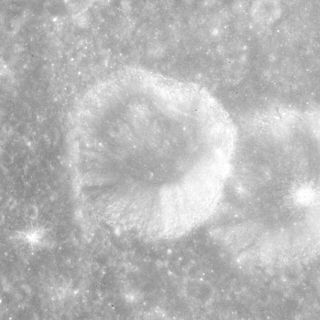
Daly is a small lunar impact crater that is located in the eastern part of the Moon, to the northwest of the crater Apollonius. This formation is relatively circular, with a slight inward bulge along the northern rim. The inner wall is wider in the southern half than in the north. The crater intrudes into the comparably sized crater Apollonius F to the east-southeast.

Condorcet is a lunar impact crater that is located in the eastern part of the Moon's near side, to the southeast of the Mare Crisium. It was named after French mathematician Marquis de Condorcet. To the northeast of Condorcet are the craters Hansen and Alhazen.

Petit is a small, bowl-shaped lunar impact crater that is located on the northwestern edge of the Mare Spumans. The crater has a prominent ray system. The name is appropriate, since petite means small in French. But it was actually named in honor of Alexis Thérèse Petit, a French physicist.
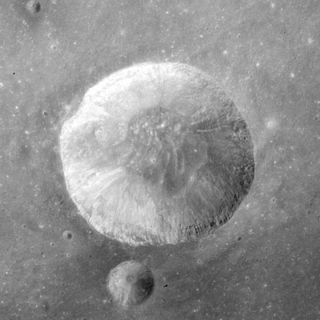
Carmichael is a lunar impact crater that is located along the eastern edge of the Sinus Amoris, in the northeastern quadrant of the Moon's near side. Its diameter is 20 km. It was named after American psychologist Leonard Carmichael. It lies within a couple of crater diameters south-southwest of the smaller crater Hill. Further to the east-northeast is the prominent crater Macrobius. Carmichael was designated Macrobius A before being given its current name by the IAU.
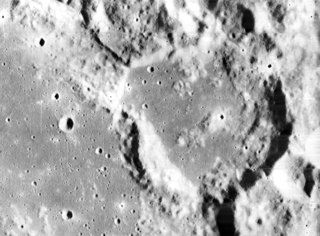
Condon is a lunar impact crater that lies on the eastern shore of the Sinus Successus, a bay along the northeast edge of Mare Fecunditatis. It was named after American physicist Edward U. Condon in 1976. It lies midway between the larger crater Apollonius to the north and the smaller Webb to the south on the Mare Fecunditatis. Condon was previously designated Webb R.
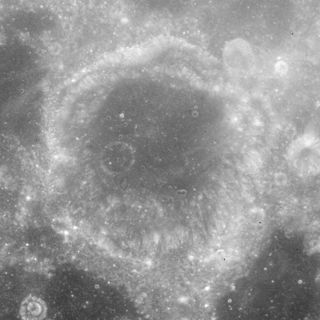
Dubyago is a lunar impact crater that lies in the eastern limb of the Moon. It was named after Russian astronomers Dmitry Dubyago and Alexander Dubyago. It appears significantly foreshortened when viewed from the Earth. It lies along the southern shore of the Mare Undarum, to the southeast of the crater Firmicus.

Firmicus is a lunar impact crater that lies in the eastern part of the Moon's near side, so that from Earth it appears oval in shape due to foreshortening. It is, however, very nearly circular. The crater is located to the west of the Mare Undarum, and northeast of the similar-sized crater Apollonius. To the north of Firmicus are the craters van Albada and Auzout. Attached to its northwest rim is the Lacus Perseverantiae, a miniature lunar mare.
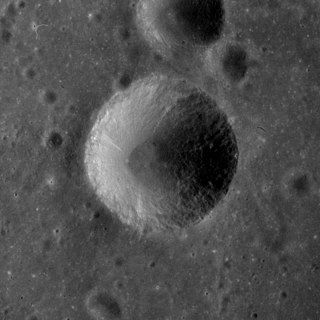
Franck is a small lunar impact crater that lies near the north end of Sinus Amoris, a bay on the northern part of Mare Tranquillitatis. Its diameter is 12 km. It was named after German physicist and Nobel laureate James Franck. The crater lies just to the southeast of Brewster, and farther to the south of Römer. Franck was previously designated Römer K.

Fabbroni is a small lunar impact crater that lies along the northern edge of the Mare Tranquillitatis, at the eastern edge of the gap where the lunar mare joins Mare Serenitatis to the north. To the southeast is the crater Vitruvius.

Kao is a small lunar impact crater that is located near the eastern limb of the Moon. It lies near the southern edge of the Mare Smythii, a lunar mare that continues onto the far side of the surface. This crater lies to the east-southeast of the crater Widmannstätten. Less than a crater diameter to the north-northeast is the small crater Tucker.

Lebesgue is a small lunar impact crater that is located near the eastern limb of the Moon. It lies in the southeastern part of the Mare Smythii, to the southeast of the crater Warner. The southeastern rim of Lebesgue is attached to a small crater that overlays the northwest rim of Swasey, so that the three form a short crater chain. The floor of Lebesgue is hummocky.

Warner is a lunar impact crater that is located in the southern part of the Mare Smythii, near the eastern limb of the Moon. In this location the crater is viewed almost from the edge from Earth, and is sometimes hidden from sight due to libration. The crater lies just to the south-southeast of the very similar Runge. To the southwest is Widmannstätten, and to the south is the merged Kao–Helmert crater pair.

Danjon is a lunar impact crater on the far side of the Moon. It lies less than a crater diameter to the east-southeast of the larger crater Langemak. To the east-northeast of Danjon is the crater Perepelkin, and due south lies the walled plain Fermi.

Erro is a lunar impact crater that lies beyond the eastern limb of the Moon, on the far side as seen from the Earth. It lies along the eastern fringes of the uneven plain that joins Mare Marginis to the northwest with Mare Smythii to the west-southwest. This part of the surface is sometimes brought into sight of observers on the Earth due to libration. However even at such times not much detail can be seen, as the surface is viewed from the edge.
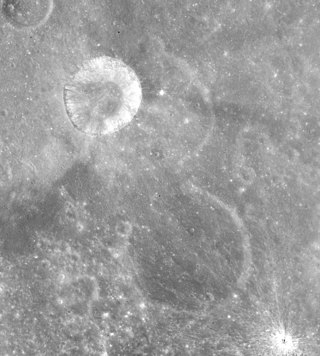
Hume is a small lunar impact crater that lies along the eastern limb of the Moon, along the southeast edge of Mare Smythii. It is located just on the far side of the Moon, but it is often brought into sight from Earth due to libration. Hume lies just to the west-northwest of the much larger Hirayama, and to the northeast of the flooded crater Swasey.






















